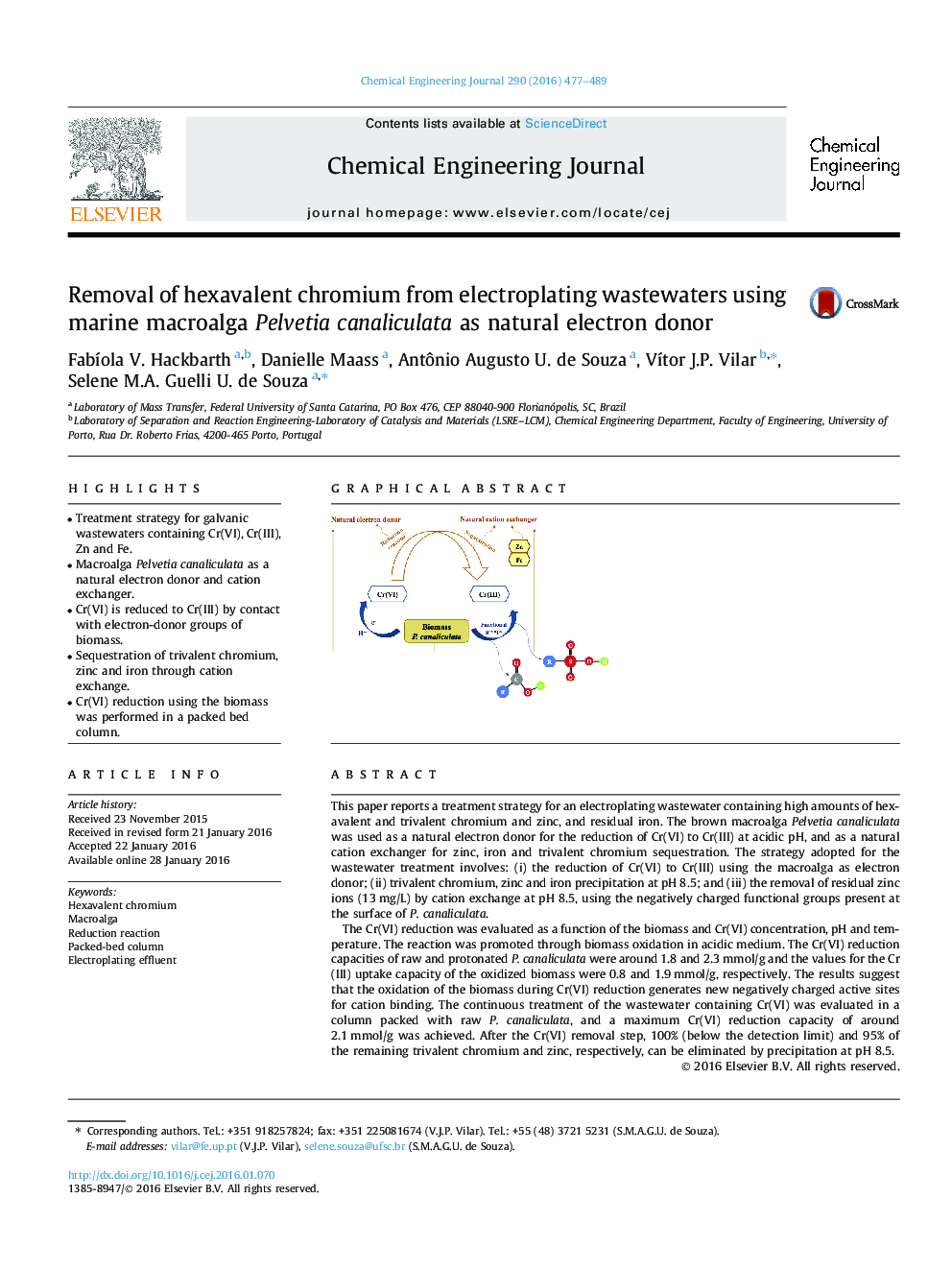| کد مقاله | کد نشریه | سال انتشار | مقاله انگلیسی | نسخه تمام متن |
|---|---|---|---|---|
| 145776 | 456351 | 2016 | 13 صفحه PDF | دانلود رایگان |

• Treatment strategy for galvanic wastewaters containing Cr(VI), Cr(III), Zn and Fe.
• Macroalga Pelvetia canaliculata as a natural electron donor and cation exchanger.
• Cr(VI) is reduced to Cr(III) by contact with electron-donor groups of biomass.
• Sequestration of trivalent chromium, zinc and iron through cation exchange.
• Cr(VI) reduction using the biomass was performed in a packed bed column.
This paper reports a treatment strategy for an electroplating wastewater containing high amounts of hexavalent and trivalent chromium and zinc, and residual iron. The brown macroalga Pelvetia canaliculata was used as a natural electron donor for the reduction of Cr(VI) to Cr(III) at acidic pH, and as a natural cation exchanger for zinc, iron and trivalent chromium sequestration. The strategy adopted for the wastewater treatment involves: (i) the reduction of Cr(VI) to Cr(III) using the macroalga as electron donor; (ii) trivalent chromium, zinc and iron precipitation at pH 8.5; and (iii) the removal of residual zinc ions (13 mg/L) by cation exchange at pH 8.5, using the negatively charged functional groups present at the surface of P. canaliculata.The Cr(VI) reduction was evaluated as a function of the biomass and Cr(VI) concentration, pH and temperature. The reaction was promoted through biomass oxidation in acidic medium. The Cr(VI) reduction capacities of raw and protonated P. canaliculata were around 1.8 and 2.3 mmol/g and the values for the Cr(III) uptake capacity of the oxidized biomass were 0.8 and 1.9 mmol/g, respectively. The results suggest that the oxidation of the biomass during Cr(VI) reduction generates new negatively charged active sites for cation binding. The continuous treatment of the wastewater containing Cr(VI) was evaluated in a column packed with raw P. canaliculata, and a maximum Cr(VI) reduction capacity of around 2.1 mmol/g was achieved. After the Cr(VI) removal step, 100% (below the detection limit) and 95% of the remaining trivalent chromium and zinc, respectively, can be eliminated by precipitation at pH 8.5.
Figure optionsDownload as PowerPoint slide
Journal: Chemical Engineering Journal - Volume 290, 15 April 2016, Pages 477–489